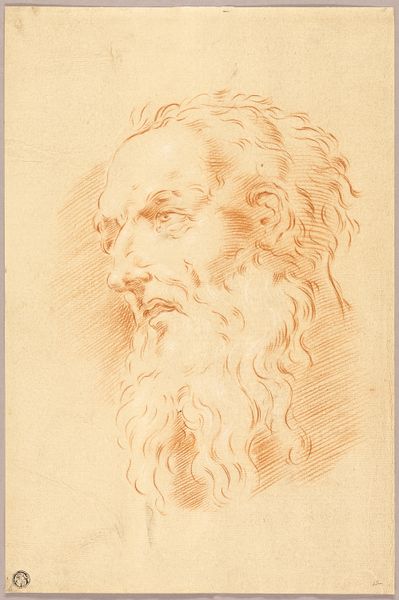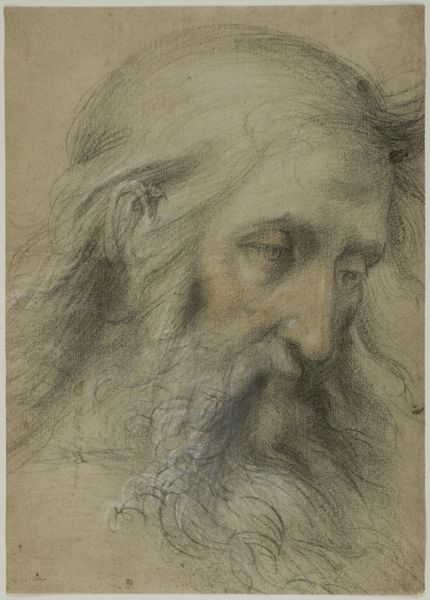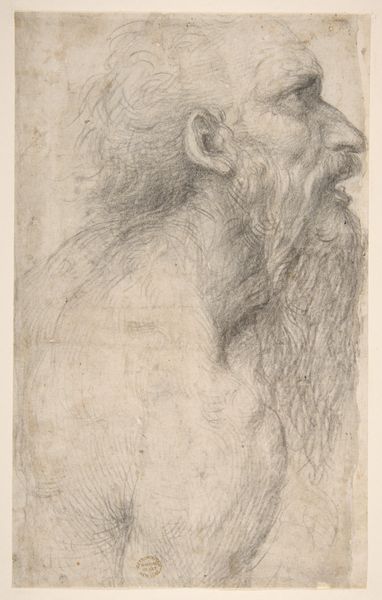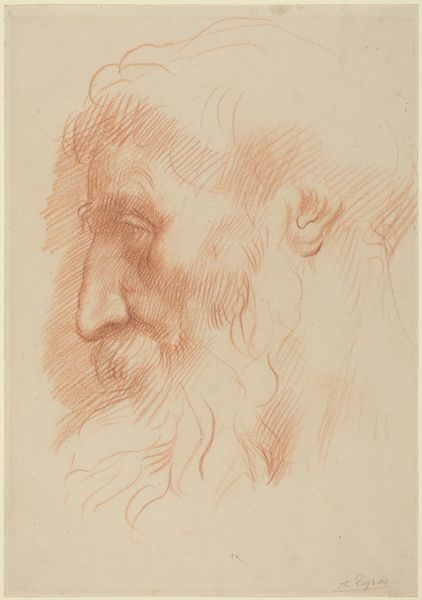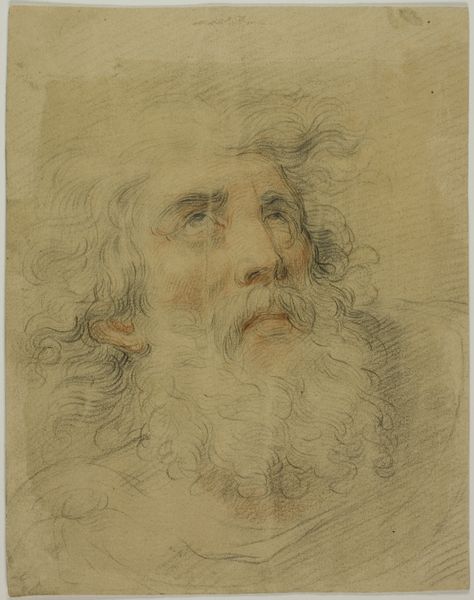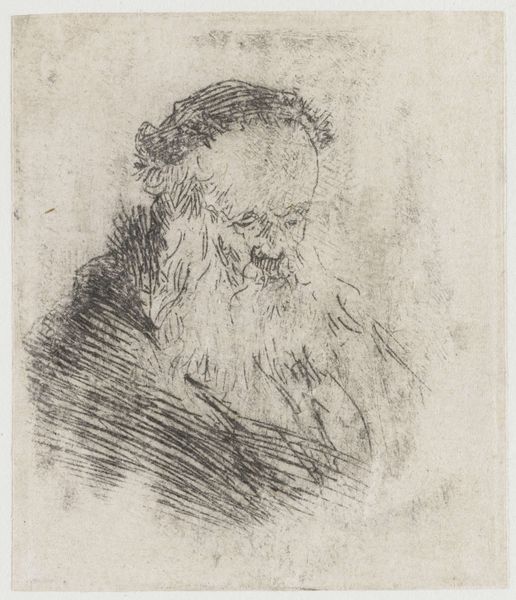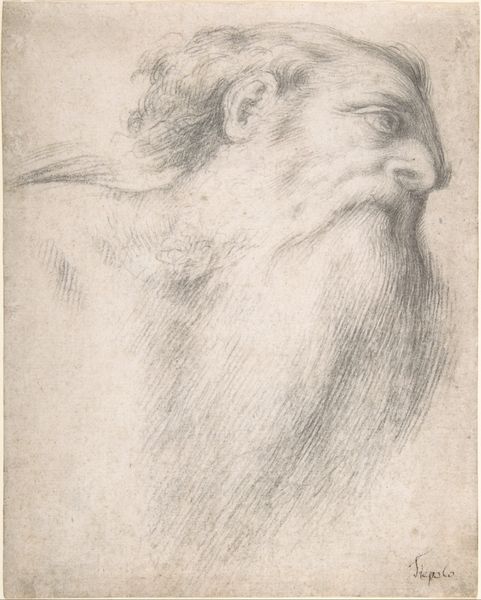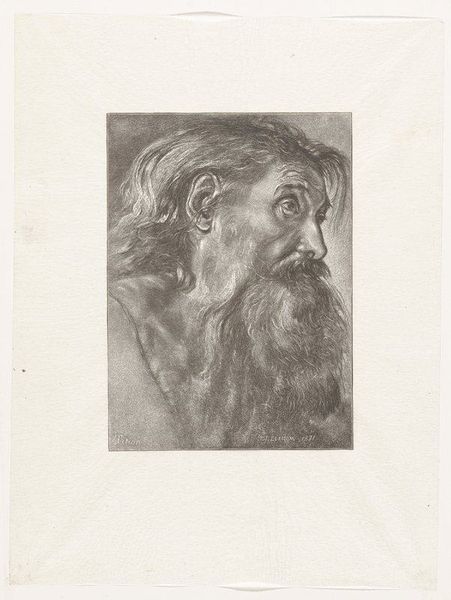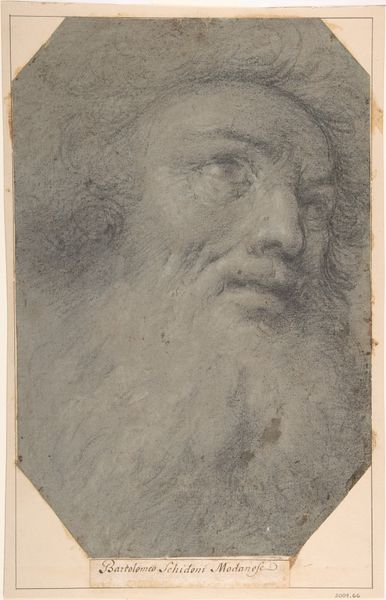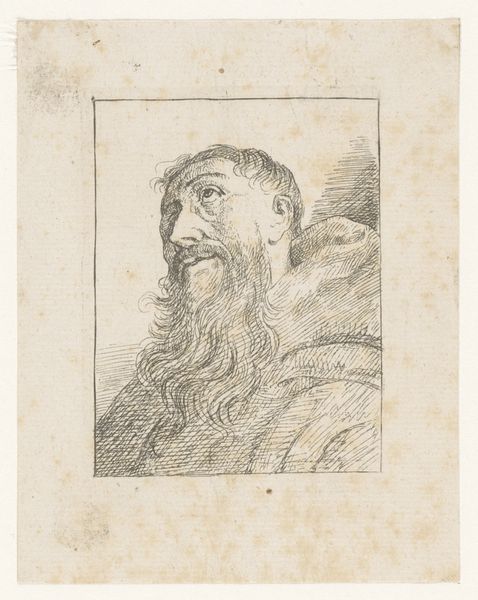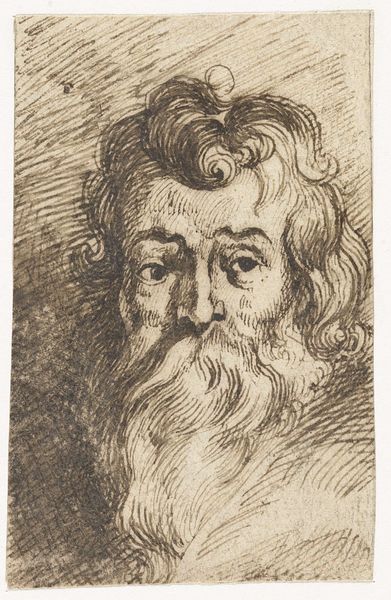
Head of a Bearded Old Man Wearing a Laurel Crown 1755 - 1823
0:00
0:00
drawing, print, pencil, charcoal
#
portrait
#
drawing
#
neoclacissism
# print
#
pencil sketch
#
charcoal drawing
#
pencil drawing
#
pencil
#
charcoal
#
academic-art
Dimensions: 20 1/16 x 12 7/8 in. (50.9 x 32.7cm)
Copyright: Public Domain
Editor: This drawing, “Head of a Bearded Old Man Wearing a Laurel Crown,” by Antoine François Callet, likely made between 1755 and 1823, is striking. It’s primarily done in pencil and charcoal, and the aged face feels both serene and melancholic to me. What’s your interpretation of this work? Curator: Considering the socio-political context of the time, this drawing aligns with the Neoclassical revival of interest in ancient Greece and Rome. Laurel wreaths were potent symbols of victory, status, and intellect in antiquity. Who would have had access to view or purchase the drawing, and for what reasons? Editor: I suppose people interested in academic art and maybe even portraits of great thinkers would’ve had a reason. Would the social status or background of the sitter in the drawing impact how it was perceived by viewers at the time? Curator: Absolutely. Neoclassicism wasn't just about aesthetics, but about reinforcing ideas of civic virtue and order, so images of prominent figures, especially those idealized with classical attributes, served a clear public function. Think of how portraits of political leaders used similar visual language to establish their authority. Who would the bearded man wearing a laurel crown be linked to in the cultural and intellectual sphere of the day? Editor: Maybe philosophers, poets or rulers who were inspired by Greco-Roman ideals. Curator: Precisely. Callet would very likely depict a philosopher, or an important leader using such established and popular neoclassical allegories. This image reinforces these qualities, imbuing them with the weight of historical precedent. I see you're getting the bigger picture and grasping what the piece represents historically. Editor: Indeed. Considering how it's so intertwined with social and cultural symbols it gives more meaning to the man portrait and also the context. Thank you for making this insightful.
Comments
No comments
Be the first to comment and join the conversation on the ultimate creative platform.
